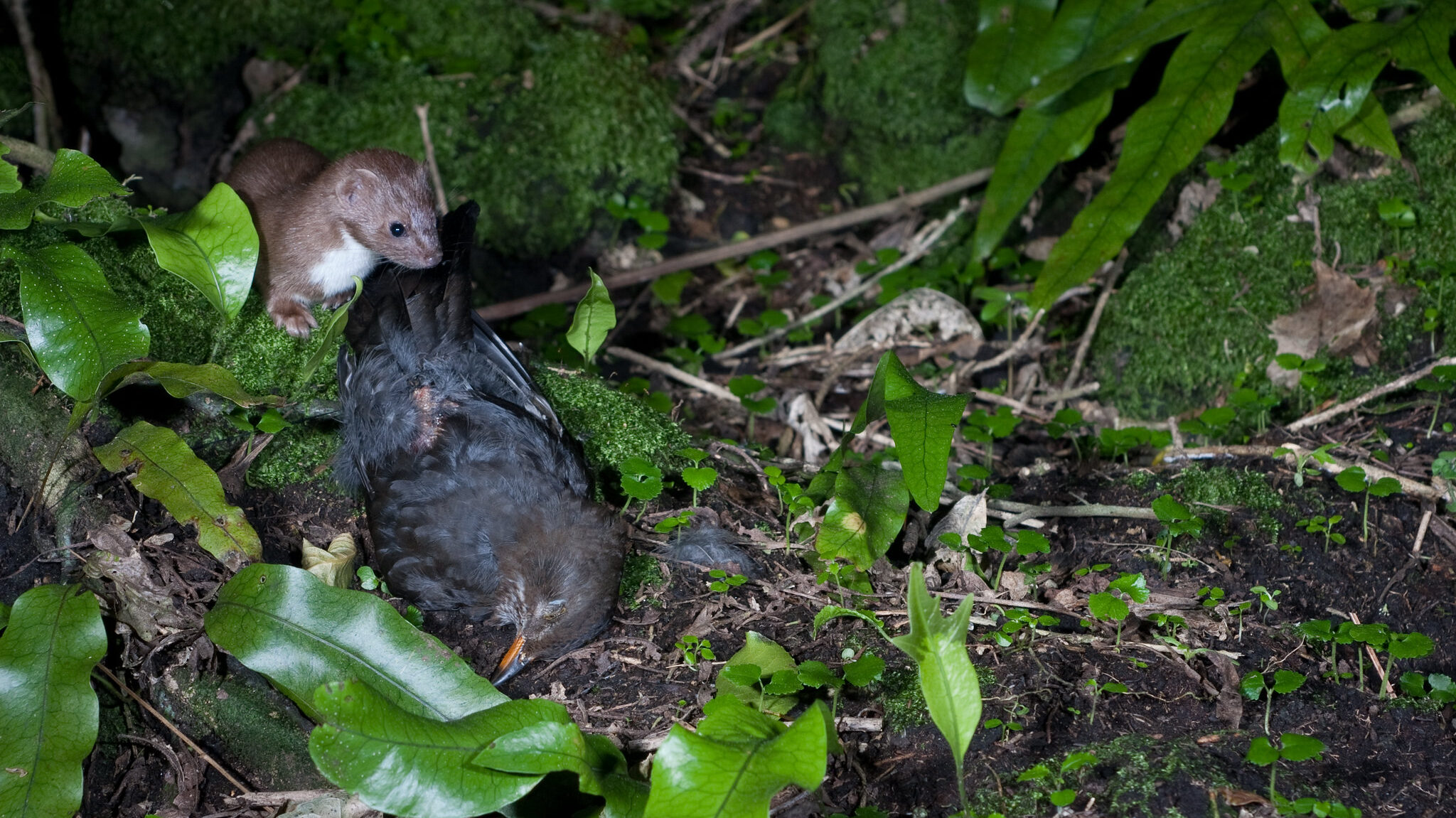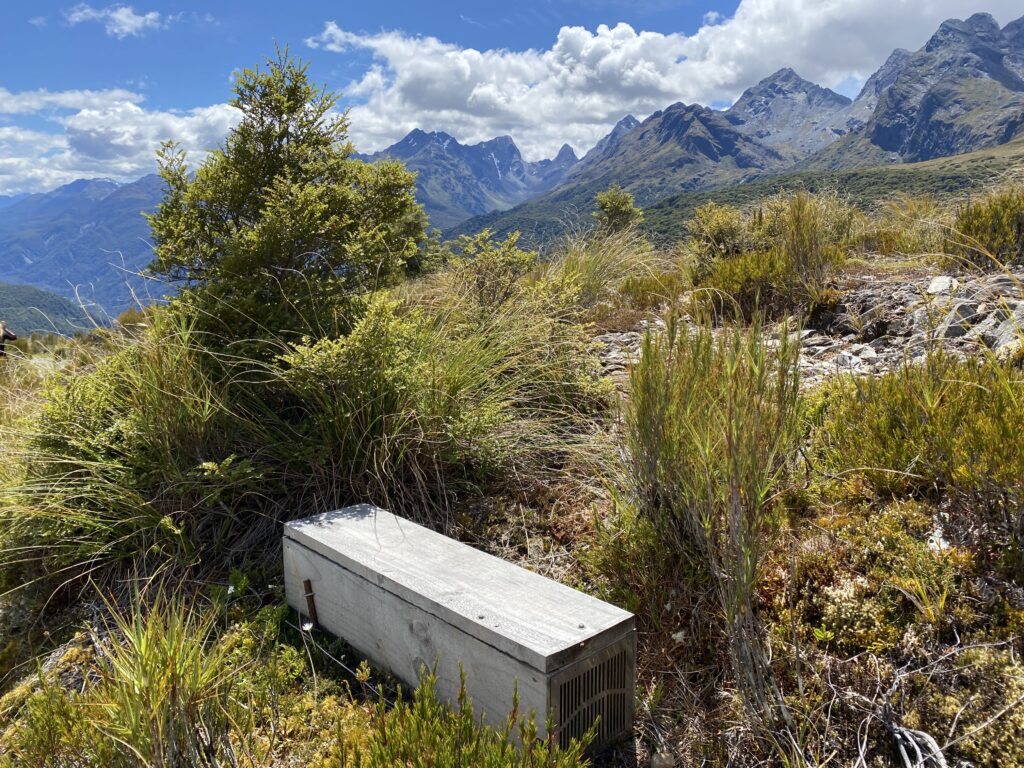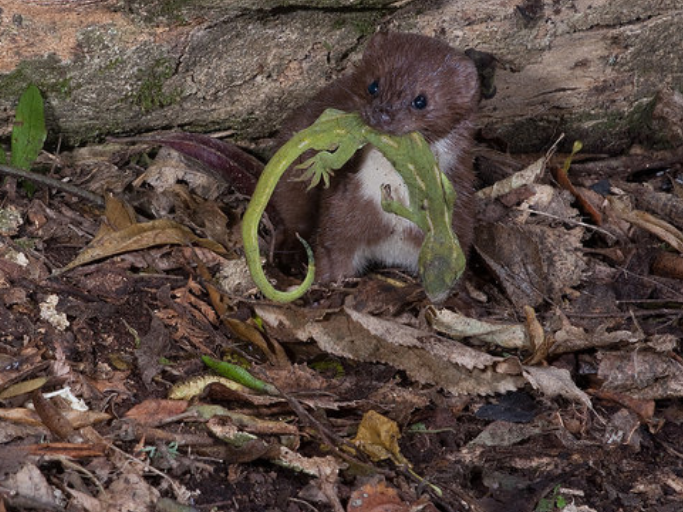Described as “murderous saveloys with legs”, new research reveals weasels cannot be underestimated as a threat to native wildlife. It is suggested we pay closer attention to the recovery of native species rather than simply counting the number of predators killed.

The impact of stoats is well documented, but DOC ranger Jamie McAulay and wildlife ecologist Dr Jo Monks asked what of their weasely cousins in their small-scale pilot research.

Their findings, published in the New Zealand Journal of Ecology, reveal weasels feed higher up the food chain, with greater consumption of lizards and small birds.
Not only do weasels appear to be better hunters than stoats, but many weigh in at less than 100 grams which is the trigger weight that sets off a standard DOC stoat trap.
“And with a much smaller home range, many weasels may never even encounter a trap in the landscape,” Jamie explains in a blog post about the study.
“These two facts combine to suggest that trapping grids designed to target stoats will catch just a small proportion of a population of weasels.”
There is plenty of evidence showing the benefits of stoat traps. However this small-scale study suggests stoat control “may contribute to periodic spikes in weasel numbers due to decreased competition and aggression.”
The consequences of stoat control on weasel population have received little attention, and the researchers cautiously highlight the potential for negative outcomes for some native species.
Jamie gives a couple of examples. “If you’re a wee bird that lays multiple eggs a year and has a lot of offspring (like the pīwauwau/rock wren), you will benefit from stoat trapping. You’re only vulnerable a few months a year (on the nest) and make enough babies that you can likely tolerate a spike in weasel numbers once in a while.
“On the other hand, species like our sunbathing alpine geckos can take up to seven years before they’ve replaced themselves with offspring and are vulnerable year-round. A pest-fest of weasel numbers at any point during those seven years could mean they do not replace themselves, and the species will decline.”
“Keep our eyes on the prize”: outcomes, not kill counts

The researchers believe their study highlights the need to maintain a focus on vulnerable native wildlife we’re trying to protect and better understand the interplay between species.
“The results of this study suggest that monitoring the recovery of native species can give a better idea of success than simply counting how many stoats were killed, as we might not always get the result we expect,” Jamie writes.
“As a ranger, my great hope is that, as this great Predator Free New Zealand project matures, our fantastic networks of community trappers will develop into community ecologists. Moving beyond the counts of the pests killed, and onto the counts of the special species saved, all while developing a closer relationship with the natural world that surrounds us.”

